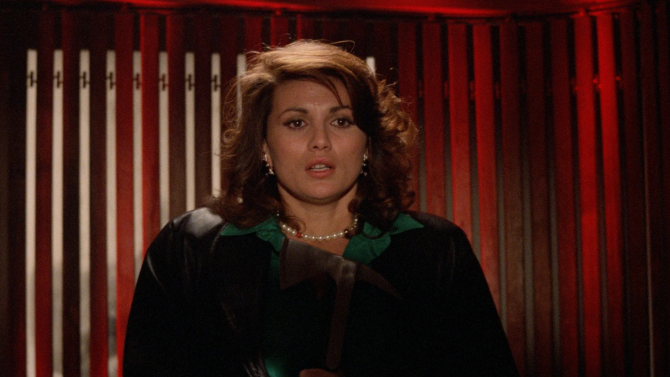
A Different Type of Photobomb
Some might know that icon Mario Bava is often considered to be the first filmmaker to make a giallo with 1963's The Girl Who Knew Too Much... though unless you’re a big fan of the genre, many will probably not know that his son, Lamberto Bava, continued on with the gialli tradition well past its heyday in the early 1970s – releasing a number of horror tinged mystery thrillers, including today’s Delirium (1987)... sometimes also known as The Photo of Gioia. Welcome to what very well could be the Italian rival of Hugh Hefner’s Playboy, fluffily called Pussycat – a high end nudie magazine that brings some class (and a bit of kitsch) to artistic nude photography. Run by former supermodel Gloria (Serena Grandi), she inherited the business when her husband tragically died.
-
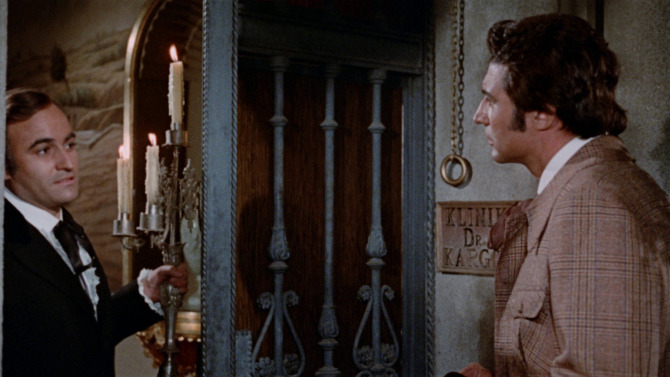
Dracula, Mi Amor
Count Dracula's Great LoveJune 14, 2021Building upon ages of vampiric lore whilst finding its own creative place in a lengthy fang toothed oeuvre, Spain’s Count Dracula’s Great Love (1973), co-written and directed by Javier Aguirre, aims for fusing sensuality and sensitivity with a mesmeric gothic atmosphere. . . and let’s not forget some 70s era gore (for good measure). Following a group of four women: Senta (Rosanna Yanni), Karen (Haydée Politoff), Elke (Mirta Miller), and Marlene (Ingrid Garbo), and a male friend, Imre Polvi (Víctor Barrera), they are unfortunate enough to have carriage trouble whilst traveling through the Carpathian Mountains (though, at least, the women all seem to have a ridiculous amount of lingerie – priorities, right?).
-
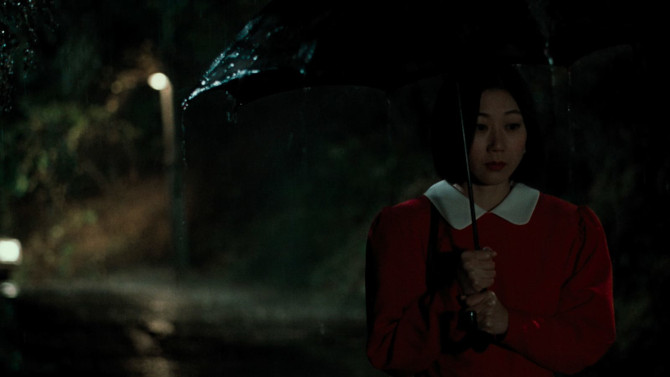
Don’t Lose Your Train of Thought
Memories of MurderMay 10, 2021Only Bong Joon Ho’s second movie, 2003's Memories of Murder already shows the masterful brush strokes of a confident young artist, writing a thought provoking, multi-layered script (based upon a series of real life murders as well as Alan Moore’s graphic novel “From Hell”) that is paired with a mesmeric visual onscreen presence. Set in a rural town in South Korea, this is a location that has been left behind. Usually a peaceful, quiet place (except when the trains pass through), October 1986 has brought with it the dead body of a young woman – both raped and murdered. Riots and protests routinely pop up in this fractured time and setting.
-
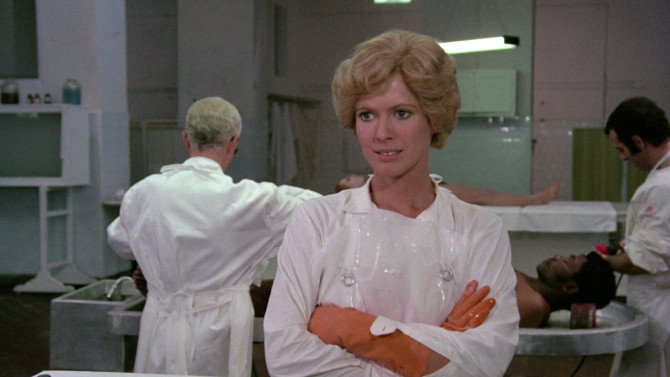
Just Around the Coroner
AutopsyApril 18, 2021Perhaps the most wild and audacious opening ever seen in a giallo, 1975's Autopsy, co-written and directed by Armando Crispino, starts with a rotisserie of people committing suicide in both shocking and outlandish ways. . . only for the camera to then take us into one of the last taboo places in film, the morgue, to show us the bodies piling up in the life of half American/half Italian Simona Sanna (Mimsy Farmer) – this is clearly not the Rome we normally see in movies. Now, you may be wondering what all these bodies have to do with her. . . well, she is a young doctor working on a research project revolving around the difference between suicides and well hidden murders made to look like the former. As you might imagine, it is grave subject matter. . . so much so that she is struggling in her romantic relationship with photographer Riccardo (Ray Lovelock) and is even hallucinating that those dead bodies are coming back to life.
-
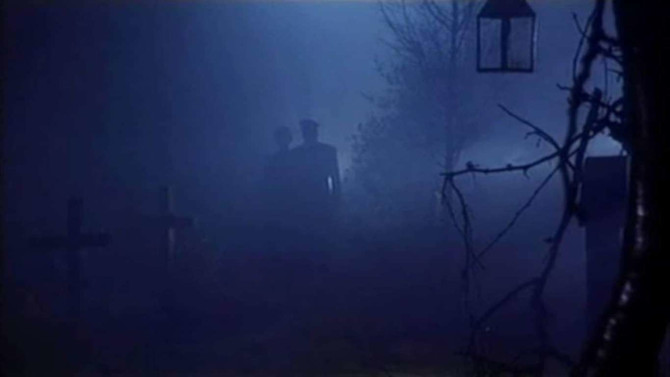
I Put A Spell On You
The Murder MansionApril 3, 2021Walking a narrow tightrope between giallo and horror, 1972's Murder Mansion, by then first time director Francisco Lara Polop, pulls from films like The Cat and the Canary (either the 1927 or 1939 edition) and House on Haunted Hill (1959), as well as sources like Agatha Christie’s “And Then There Were None” and maybe even Scooby-Doo, to create a bizarre concoction that mostly works. Opening in a most unexpected way for either a giallo or horror feature, motorcycle meets sports car in a blistering country road race, the former driven by calm, cool, and collected Fred (Andrés Resino), while the latter is floored by cocksure Mr. Porter (Franco Fantasia – talk about a name). Only fueling the fire, sultry fashionista Laura (Lisa Leonardi) is spotted hitchhiking. . . the motorist winning the pick-up over the biker, the chase continuing as they weave in and out of sporadic traffic. . . only for the biker to convince her to join him at their next gas station stop (as Mr. Porter is a tad too handsy).
-
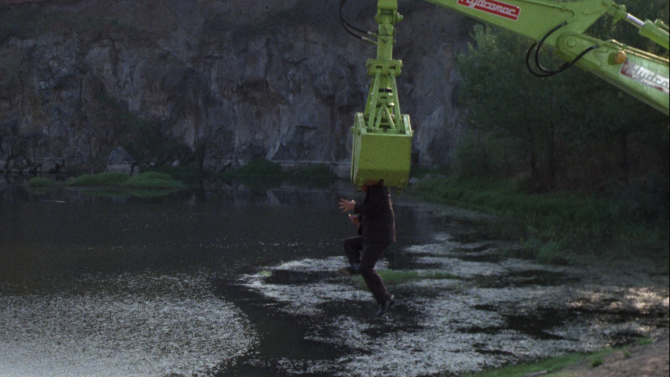
Mio Caro Assassino
My Dear KillerMarch 14, 2021Introducing us to what would normally be our main protagonist in a gialli, Umberto Paradisi (Francesco Di Federico) – an insurance investigator turned amateur sleuth who has hired a two bucketed backhoe to dredge up some unknown clue from a murky quarry pond, is unceremoniously nabbed by the two pronged machine, hoisted up, legs dangling, before his neck finally gives way and he is no more – talk about an introduction! The movie title, which is a rare near perfect translation of its original Italian, is My Dear Killer (1972), directed by Tonino Valerii, a slightly lesser known giallo with some influential moments.
-
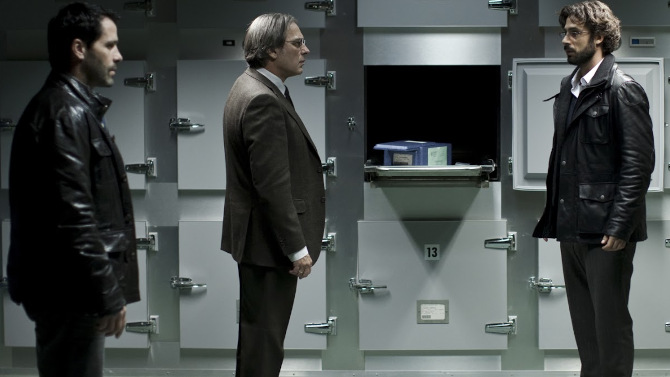
Morgue-Gauge
The BodyFebruary 24, 2021Sometimes a ‘From the Producers of’ label found during a trailer (or slapped across a DVD or Blu-Ray) can be a very misleading thing, yet, in this case, it is wholly justified. One of the most intense, dark, and intriguing groupings of mystery/thrillers (with horror elements) to come out over the past twenty years are three Spanish language films, all starring Belén Rueda. Starting with the most well known, 2007's The Orphanage, it was then followed by 2010's Julia’s Eyes, this Producers’ trilogy closing with 2012's The Body (reviewed here today. . . write-ups on the other two can also be found on Filmizon.com). Co-written and directed by Oriol Paulo, he sets his story (for the most part) in a most disturbing place – the morgue. On this dark stormy evening, we find the night guardsman fleeing the remote locale with a fear that can only be described as primordial (akin to seeing a ghost). . . he is soon after struck by a car (leaving him in a coma).
